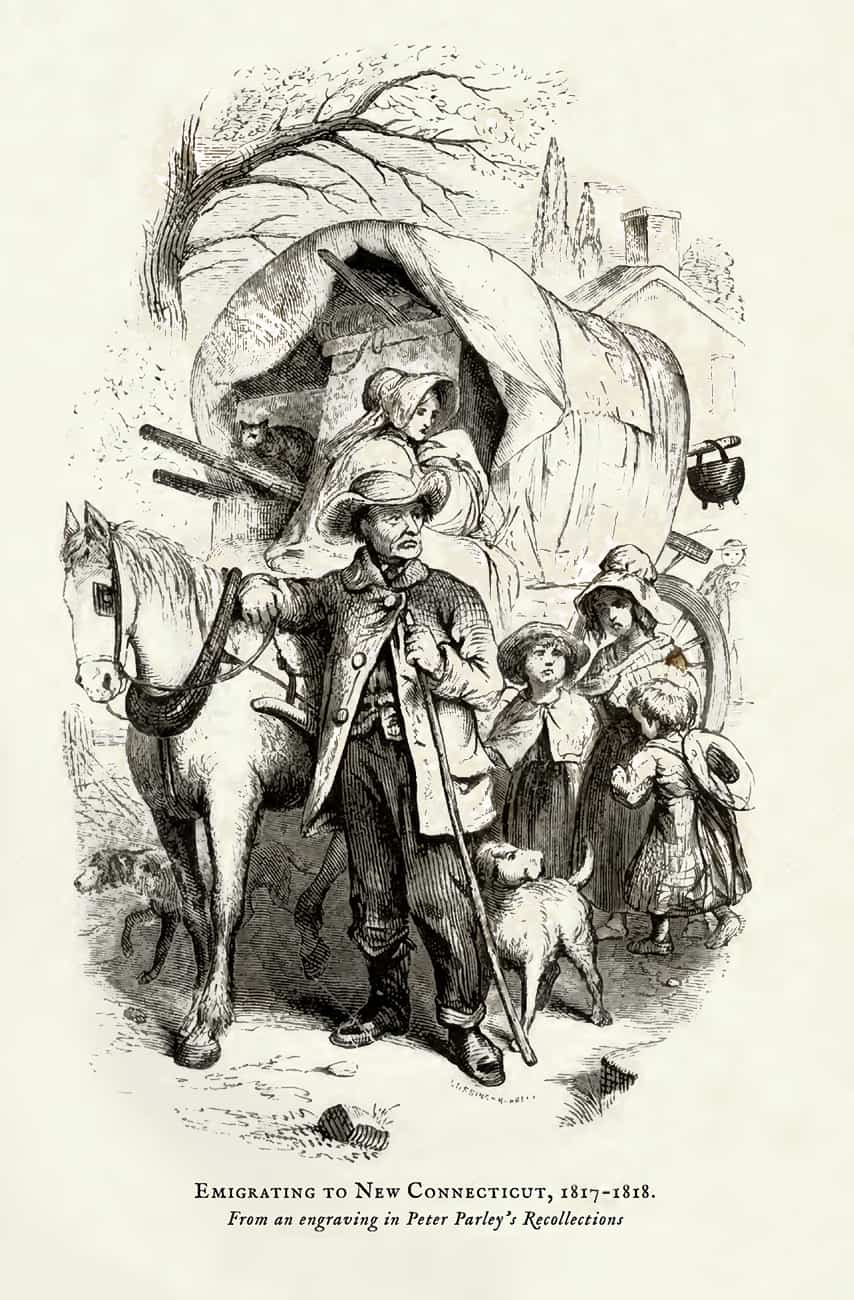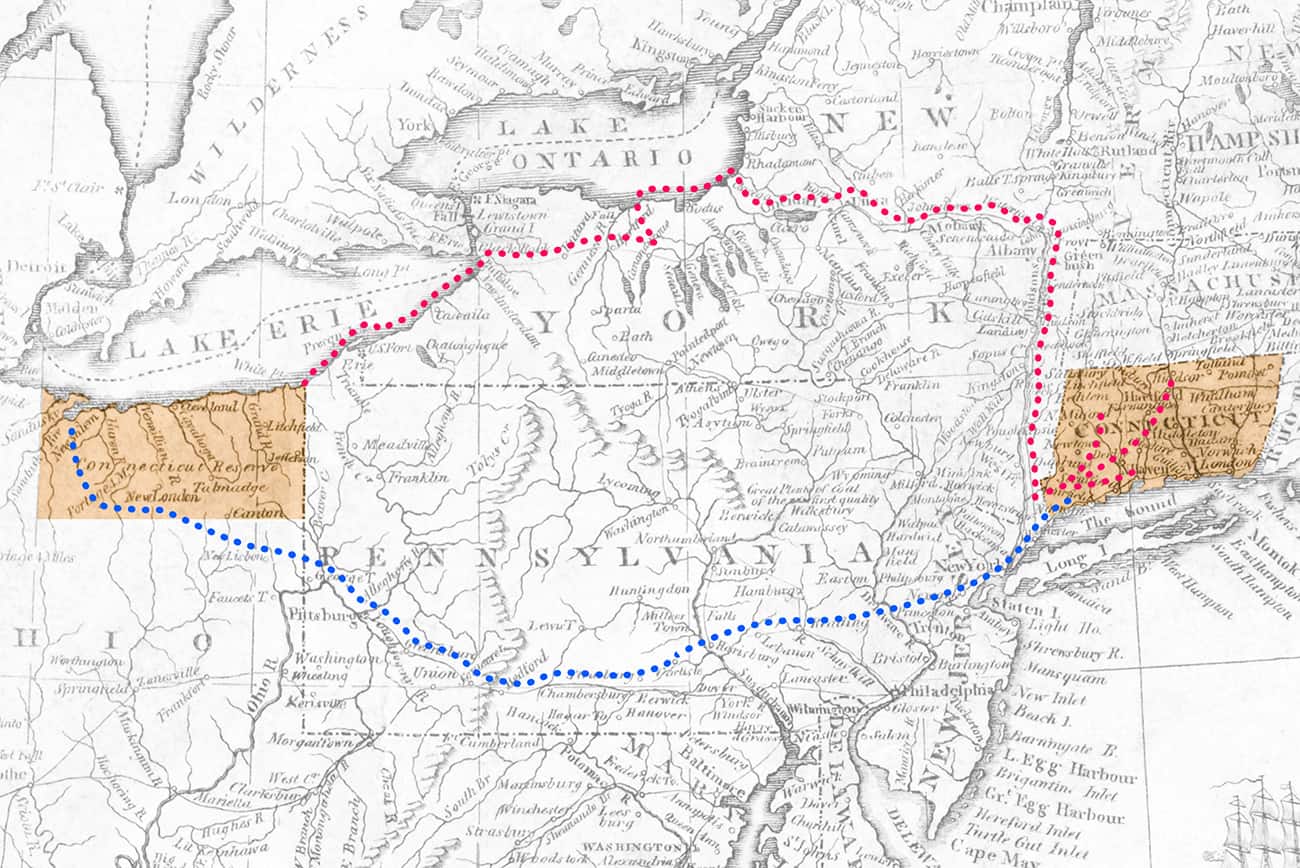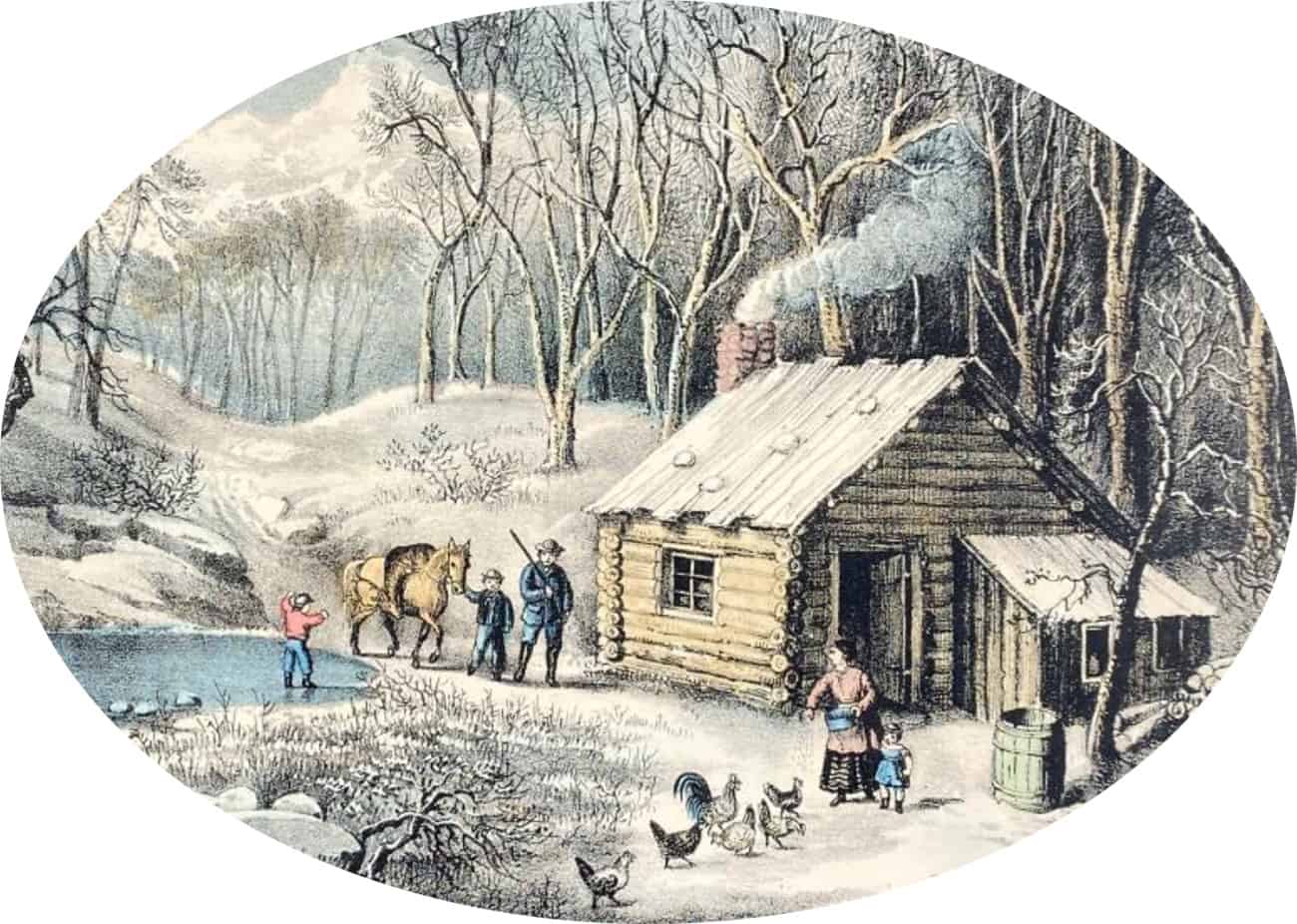
The Departure

Account of the Route to Ohio
I remember “that assembly on the village green, for the first emigration to the west, to found Norwalk, Ohio. I can see those white-covered wagons as they disappeared down Barkmill Hill; can hear the Doxology, the partings, as if forever.”
From Norwalk After 250 Years, in a letter of reminiscences of his childhood in Norwalk written by W. T. Clark.
“We left Norwalk, Connecticut on January 24, 1816. Eight of us were leaving good homes for a home in the west. When we left our pastor came in and our friends assembled to give us their parting blessing and offer prayers for our preservation, for they felt indeed that they were burying us from their sight for life.”
From the Personal Memoirs of Elizabeth Lockwood Gibbs, daughter of Stephen Lockwood and wife of David Gibbs.
Henry Lockwood went out to Norwalk, Ohio in the spring of 1815 to make preparations to move his family there in the following year.
“Arrangements were made by my father and my brother-in-law, David Gibbs, and myself to go on to Ohio and after purchasing a team and getting a covered wagon built suitable for the purpose, we started from Norwalk, Fairfield County, Connecticut, our native and then place of residence on the 12th of June, 1815. We proceeded from Norwalk, Connecticut, to New York City, and thence to Newark, New Jersey; eastern Pennsylvania; Reading, Harrisburg, Carlisle, Strawsburg, Bedford, Chambersburg, and Pittsburg, Pennsylvania. From Pittsburg to Beaver and to New Lisbon, Columbiana County, Ohio, where we spent the 4th of July. Thence to Wooster, Mansfield, and to New Haven. Here we took what was called Bell’s Trail, to lower Sandusky, which went thru the west part of Sherman. Here I first commenced frontier life.
We found three families then residing in the township of Norwalk: Abijah Comstock, Benjamin Newcomb and Samuel B. Lewis; they were all about four miles apart.”
Reminiscence of Henry Lockwood from The Firelands Pioneer, 1859.
Elizabeth Lockwood Gibbs and her husband, David Gibbs went to Ohio with Elizabeth’s brothers and their families. They left Norwalk, Connecticut on January 24, 1816 and arrived in Norwalk, Ohio on April 29 of the same year and were among the first settlers in the area.
“My father and Captain Chichester accompanied us on the road ten or twelve miles to see how we got along. We found our two yoke of oxen not sufficient to draw our baggage, so we purchased a horse for a leader.
Our home then was a substantial wagon, covered with oil cloth, lined with blankets, carpeted, spring seats; very comfortable and decent.
It began to thaw when we reached Buffalo and we feared a breaking up, so we left our box of crockery, glass and tin ware to come in by water in a small schooner.
The thaw did continue making the roads almost impassable… so that we road upon frozen lakes until the water stood so deep above the ice that we dared not go another step; then plowed again thru the mud.
Crossing the creek, the ice gave way near the west shore. One yoke of oxen and one horse were lost. About one foot of our wagon was visible, eight or more feet being submerged. The Indians were called to our assistance and were obliged to dive for the things. They brought up a bureau, box of inn chains, axes, plough shares, kitchen ware, etc… The Indians were paid $20 or $30. They also brought up the oxen, gave us the shoes and skin and eagerly ate the meat themselves.
Our little Henry was well when we started but complained soon… Little Henry was constantly growing worse and the doctor in Fredonia pronounced his case as ‘camp dysentery’. He lingered twelve days… Our only son was left there, in his little lone grave, with no slab to mark his resting place.
I was similarly attacked and my case was considered beyond all possible recovery, so decidedly that the neighbors came in several times to see me die, but a merciful God saw fit to spare my life.
Our washing bill during my illness was over $20, paid one dollar per day for one horse, cod-fish was 50 cents a pound and other things in proportion – including $110 for oxen. Our expenses there were over $500, making quite a diminution to out stock of money, which was intended to last us one year.
We reached our home… our houses were of logs, built durable; with a hall thru the center, open at each end. We had no partitions the first year… Our first sash [window] was made of slats, crossed and greased paper pasted to these slats. After a few years, we rejoiced in being the possessors of a glass window, twelve panes that would ‘stove up’.”
Reminiscence of Elizabeth Lockwood Gibbs from The Firelands Pioneer, 1859.





